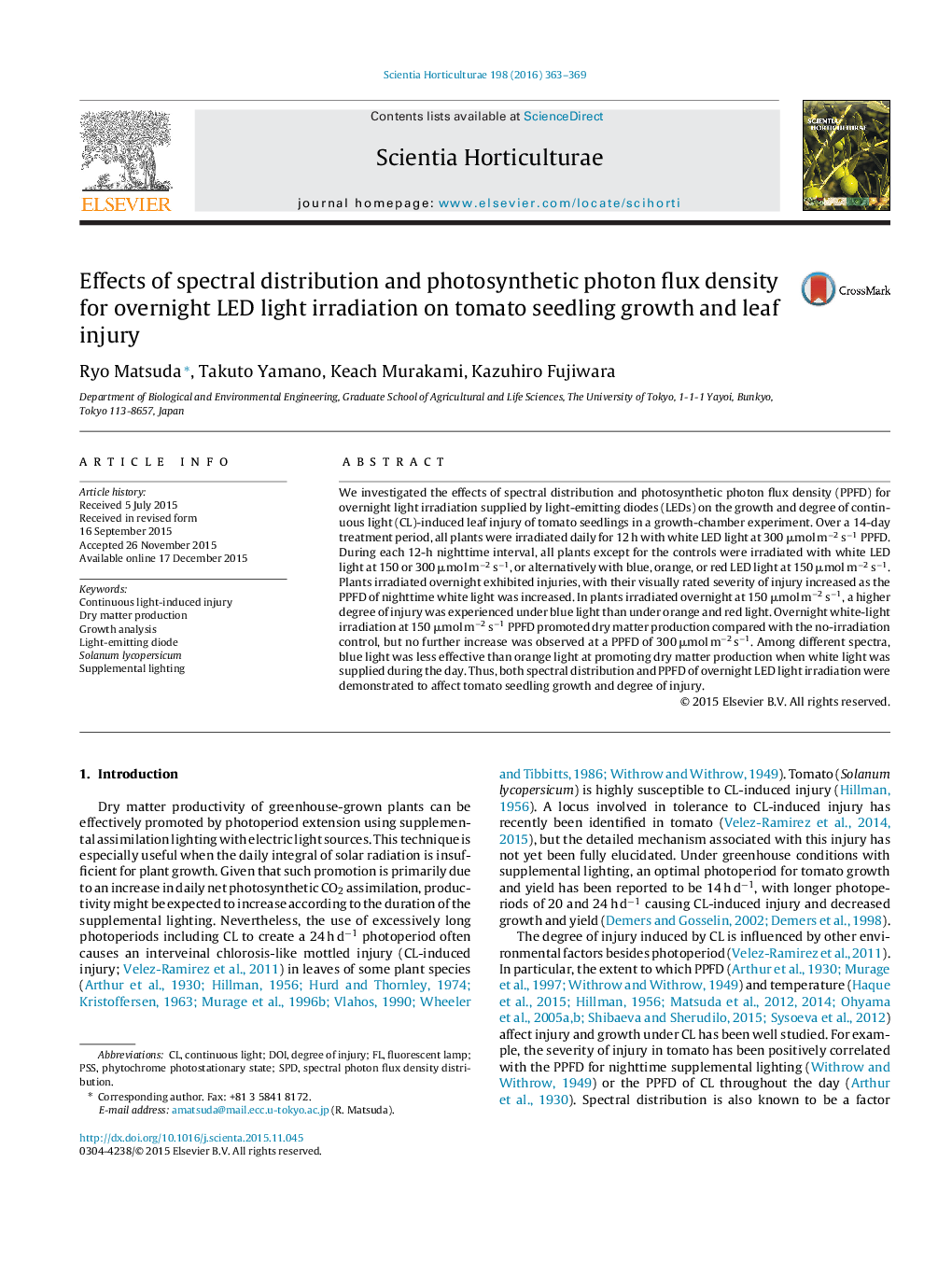| Article ID | Journal | Published Year | Pages | File Type |
|---|---|---|---|---|
| 6406594 | Scientia Horticulturae | 2016 | 7 Pages |
â¢Effects of PPFD and spectrum of LED light at night were examined with tomato.â¢The higher the PPFD of white light, the greater the severity of leaf injury.â¢Shoot growth was promoted under a moderate PPFD but not under a higher PPFD.â¢Blue and white light induced more severe leaf injury than orange and red light.â¢Blue light was less effective in shoot growth promotion than orange light.
We investigated the effects of spectral distribution and photosynthetic photon flux density (PPFD) for overnight light irradiation supplied by light-emitting diodes (LEDs) on the growth and degree of continuous light (CL)-induced leaf injury of tomato seedlings in a growth-chamber experiment. Over a 14-day treatment period, all plants were irradiated daily for 12 h with white LED light at 300 μmol mâ2 sâ1 PPFD. During each 12-h nighttime interval, all plants except for the controls were irradiated with white LED light at 150 or 300 μmol mâ2 sâ1, or alternatively with blue, orange, or red LED light at 150 μmol mâ2 sâ1. Plants irradiated overnight exhibited injuries, with their visually rated severity of injury increased as the PPFD of nighttime white light was increased. In plants irradiated overnight at 150 μmol mâ2 sâ1, a higher degree of injury was experienced under blue light than under orange and red light. Overnight white-light irradiation at 150 μmol mâ2 sâ1 PPFD promoted dry matter production compared with the no-irradiation control, but no further increase was observed at a PPFD of 300 μmol mâ2 sâ1. Among different spectra, blue light was less effective than orange light at promoting dry matter production when white light was supplied during the day. Thus, both spectral distribution and PPFD of overnight LED light irradiation were demonstrated to affect tomato seedling growth and degree of injury.
